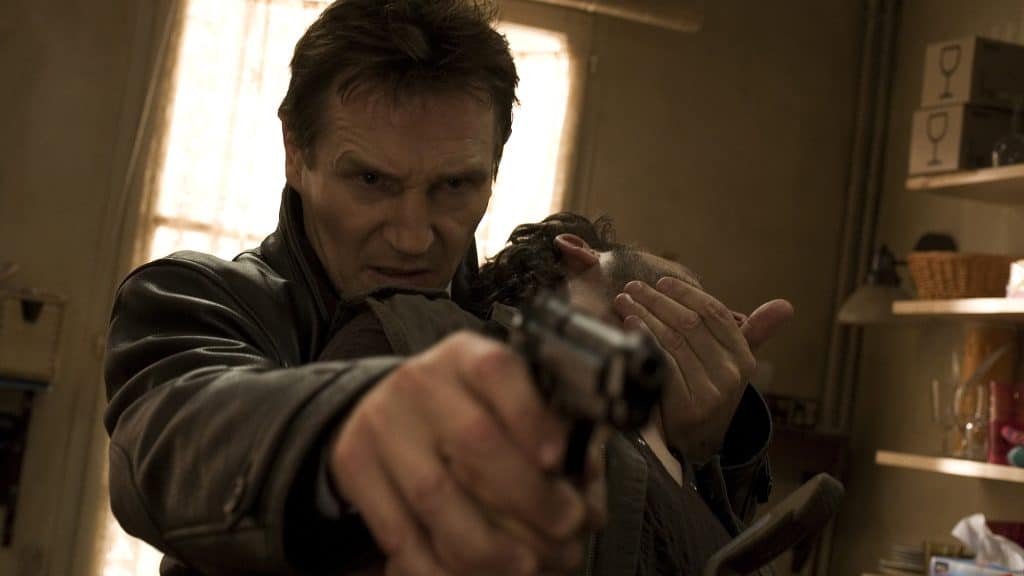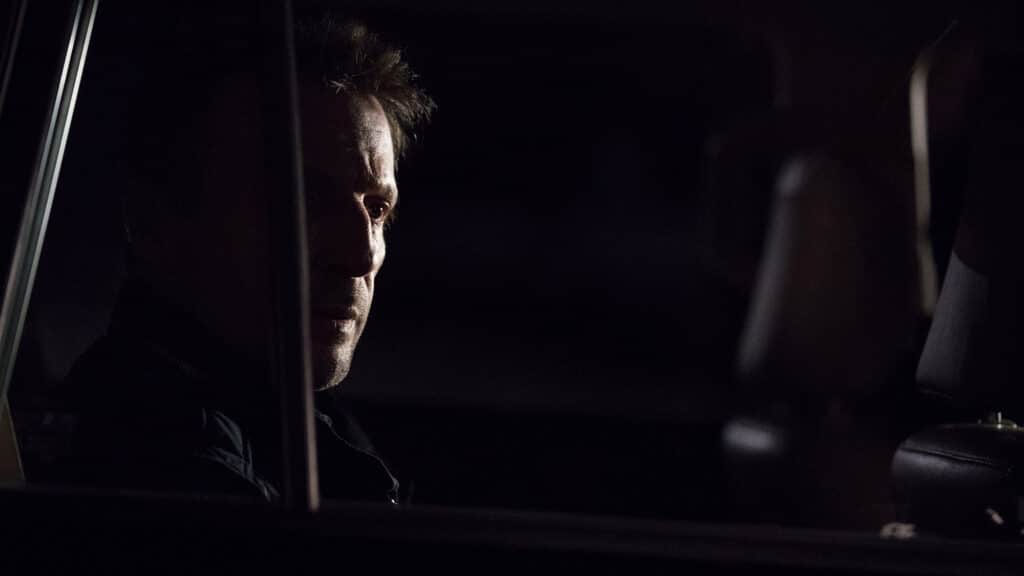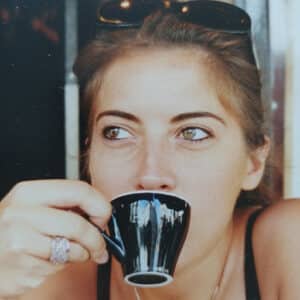Their stills are among the most shared images and attract film audiences worldwide. However, their names remain unknown to the general public. They are film-set photographers whose task is to capture the essence and the feel of a film, apart from the trailer, even as they document the history of cinema.

Still photography is as old as cinema. However, the status of the photographer has fluctuated on both sides of the Atlantic along with the changing industry: from the star system to the New Wave, from publications for cinema buffs to film magazines, from analog to digital, from the advent of TV series to streaming platforms. While the photographer might be the only one who does not actually make the films, his objectives are closely aligned with those of the producer: to promote the theater release with powerful images that reflect the plot and the spirit of the film. From action scenes to portraits of the actors, to posters, these images circle the globe. Some manage to have a lasting impression on viewers, while others go down in film history as its most beautiful documents.
Cultivating an artistic eye
These photographers’ task requires observation, patience, discretion, and instinct. Whether they are English, American, Italian, Australian, or French, they convey their love of photography and cinema, replete with anecdotes which lend a personal touch to their images. These photographers, who are seldom household names, are true masters. David James is one of them: fascinated by images from the age of nine, this legendary British photographer, based in Los Angeles, has traveled to hundreds of film sets, starting at MGM in the early 1960s. He has thousands of stories to tell, things to make you laugh until you cry. For starters, take one of his first collaborations with director Otto Preminger on the set of Bunny Lake is Missing (1965): “He told me I was there to sell his film. He said, ‘Picture you want to buy a can of beans in a supermarket. There are only plain aluminum cans with the word “beans” written across. Add one with an illustration, and customers will be hooked.’”



The man who would have preferred the nickname “Mr. Still” rather than “Beecham’s pill”—Cockney for a photograph—has conquered Hollywood, both analog and digital. The Man Who Fell to Earth, Jesus Christ Superstar, Schindler’s List, Saving Private Ryan, Star Wars VII: his filmography makes your head spin—a discreet approach applied to a diversity of genres, always in the service of the film crew: “I always wear dark colors on the set, or something to blend with the surroundings,” he explained. “Before digital cameras with silent shutters, to get the right shot you had to ask for it (sometimes insist). I had two Rolleiflexes, a 4×5 flatbed camera, and all the accessories.” He would then organize a shooting session to cover the scene. The whole crew had their eyes on him and the actors re-enacting the scene before the camera. “Some directors would direct actors in these brief moments: like Steven Spielberg, he’s the perfect man for movie still photography, he’s always interested and concerned about the look of his film.”
Toward an expanded vision
David James’s meeting with the director of Schindler’s List was a turning point: “That film was and always will be very special to me. It was the first of many projects with Steven, and shooting in black and white was a dream and the only way to go.” James created searing images of the Auschwitz concentration camp and of Ralph Fiennes as a Nazi officer staring at us from his convertible. Between the texture of the photo, the actor’s gaze, the effect of motion and blur, the shot looks like an archival image. A shot taken in the old ghetto: “This type of photo owes its existence also to the gaze and behavior of the actor, the costumes, the director. It’s like putting together pieces of a great puzzle. You must be in the right frame of mind and live in the moment.”

a camp was built outside. I was able to enter it to capture the atmosphere, the barbed wire… I was alone when I approached the area where the gas ovens were located.
I felt that I was no longer alone, as if a million pairs of eyes were watching me. This frightened me and I slowly backed away. © David James

David James’s career is replete with masterpieces, like Tom Cruise atop the Burj Khalifa in Dubai for Mission: Impossible—Ghost Protocol, or Saving Private Ryan stills inspired by Robert Capa. Or yet the surreal, retro black-and-white shot taken in the Pinewood studios in London on the set of J.J. Abrams’s Star Wars: The Force Awakens, which delighted the social networks. When asked how to photograph a film of the magnitude of Star Wars, James revealed that he turned down the very first installment, A New Hope: “At the time, George Lucas said to me ‘I’m going to talk to you about this film, what you’re going to see or not see on the set. Don’t say anything until I’m done.’ I sat down and listened. At the end of his description, I said to myself that this was not for me, too many visual effects that would be hard to handle.”
David James helped found the Society of Motion Picture Stills Photographers (SMPSP) and served as one of its presidents. The organization works toward ensuring global recognition of still photographers and their valuable contribution to the industry. While James has published numerous books, he is now dedicated to mentoring, passing on his passion for the craft.


Finding the right angle
Chiabella James, David’s daughter, has long avoided following in her father’s footsteps and the pitfalls of nepotism. “I grew up running after him on sets with his bags of photos,” she recalled. “The way ahead seemed obvious, but he spent years talking me out of it. … Things fell into place only after I went through a series of tragedies that changed my world in my late twenties.” Her father offered her a job in the stills department on Star Wars VII. Chiabella James has since developed her personal approach by working on several major feature films with Tom Cruise, including two Mission: Impossible — Rogue Nation and Fallout, part of which takes place in Paris. Her career has combined landscapes, actor portraits, and action shots of fights, car chases, and explosions: “I thrive on these split-second moments. Understanding how the scene will unfold is the first step, and that means asking the crew questions and knowing what camera angles the action is going to be focused on.” Then experience and instinct take over. How to set up the camera and when to press the shutter release: “Nothing compares to that happy feeling when you know you’ve captured the images you wanted.”

the relationship between the characters, the scene and the landscape. I positioned them for 10 seconds and asked them to look toward their future in the story. It was quick but valuable.
© Chiabella James

in terms of what I was experiencing, and extreme, as if it were a painting. © Chiabella James
Chiabella James’s career got a big boost with Denis Villeneuve’s Dune, and her photos from the film set have traveled around the world. While she doesn’t really prepare ahead of time, she always stays attentive to discussions on the set to understand the plot and the characters, because her images “are used only once the production is done and they’re ready to be sold.” Timothée Chalamet, Rebecca Ferguson, Javier Bardem, Josh Brolin, Ian McKellen, Helen Mirren, Gal Gadot: some of the greats have already posed for her: “I’ve been lucky enough to work with many actors who understand the importance of photography to promote the film.” Her own influences include Guy Bourdin, Jacques Henri Lartigue, Mario Sorrenti, but also Clay Enos, and of course, her father. She aims to prove that film set photography is an art in its own right. “We are the most published photographers in the world, but there are thousands of beautiful images that never get used and never see the light of day. I’d like to change that.”
In the heat of the moment
Australian Jasin Boland tells yet another story. He started out as a press photographer before embarking on a career in the film industry, where he feels more at home. Both jobs bear some resemblances: “Covering the news and shooting action on feature films is spontaneous,” he said, “and both come with their own set of problems. In both cases, you’re not always welcome, you have to know when to stay away. Self-preservation is key!” His golden rule? “Patience and timing.” For him, “success comes from failure.” The result is an impressive career, and he “appreciates the anonymity,” especially when people discover that he has worked on one of their favorite films: “That makes my day!” He has taken masterful photographs of Mad Max: Fury Road, Jason Bourne, the Matrix trilogy, No Time to Die, Captain Phillips, Thor: Ragnarok, and Everest. “I have always treated the film set as a real environment, and told the story of the directors, offering an opposite, or at least alternative, point of view.”


Case in point is the fourth installment of Mad Max, shot in Namibia, with parts in Cape Town and Sydney. “I had to get over some hurdles,” Boland recalled. “George Miller and cinematographer John Searle gave me lots of leeway. … You are only as good as the access you’re given. And what I’ve been allowed to do on this film is unprecedented.” Adventure and action, standing up to the challenge, being in the midst of things, and seizing the moment are the recurring themes. The image of Charlize Theron screaming in the desert is one of the most memorable. “It was the last shot of the day,” Boland said. “In such moments, my experience as a photojournalist comes in handy.” Because what Boland loves best is capturing the raw emotion when an actor gives his all, then lets it all out. “You could never set up this kind of image and get the same emotion. It’s as spontaneous as the news.”
From the desert (Fury Road) to snowy peaks (Everest), to the high seas on a container ship (Captain Phillips), Jasin Boland always ensures his safety when documenting stunts: “I scout the locations and check with the SFX crew to see if there are any explosions or other things on the scene, and then I let security and the first assistant director know that the spot is approved so no one is surprised I’m there.” His method is to shoot with both eyes open and to stay alert to the surroundings. He uses camera rigs, so as not to miss anything. This Nikon ambassador travels with about 100kg worth of gear, and his YouTube channel is full of stories and good technical advice.


The weight of a still image
In France, things work a bit differently. While film set photography used to be its own thing, with some world-famous shots by Georges Pierre or Raymond Cauchetier, this is no longer true today. The advent of digital technology and ultra-high-definition cameras has changed the rules of the game. Producers are scaling back production costs, and the photographers bear the brunt of the cuts: they no longer participate in the total duration of the shoot. This problem rises also in the context of film history, even if the Cinémathèque française continues to work on the conservation of film heritage. Today, production is moving towards a deliberate forgetting of the photographic memory of the seventh art. In the age of social networks, the place is left more to photograms (splinters of the 24 images per second) as visuals of films.
And yet storytelling through images remains Stéphanie Branchu’s credo. Her inspiration comes from the sets, the costumes, and her permanent quest for gaze and emotion. Her career as a film set photographer took off with Patrice Leconte’s Girl on the Bridge (La Fille sur le Pont),and she has since worked on many feature films, such as Taken, starring Liam Neeson, and Jackie, starring Natalie Portman: “I’ve loved my job from the very start,” she recalls with a smile. “I was working with Catherine Cabrol. The still camera, once so important, has now been replaced with photograms, so we must find the right shot, the right frame, and prove that our presence brings an added value.” Over her twenty-year-long career, she has seen her profession transform: “Set photography has become merely promotional. Producers only think about the film release and about the poster. They are not interested in anything else,” she stated frankly, even if she still enjoys some artistic freedom. With all her experience, she can afford to ask actors to replay scenes, although she prefers to capture the moment.


Another change stems from the working methods. In the days of analog film, photographers would take their film to the lab, select their images from the contact sheets, and that was that. “Today, digital photography requires a significant amount of time in post-production, sorting and retouching which is done off the clock,” explained Stephanie Branchu. The time is long gone when the set photographer could produce a real story, capturing both the shooting of the scenes, the actors, and the life on the set. But, as a member of the Photographes de Films Associés (PFA), which promotes the profession, the art and the photographers’ place in the creative process and memory production, she remains hopeful. Her work on TV series like The Bureau (Le Bureau des Légendes) (Canal+), Inhuman Resources (Dérapages) (Arte), Emily in Paris (Netflix), and The Serpent Queen (Starz), has led her to see some “possibilities,” yet without getting ahead of herself: “The series are longer; we might work for twenty days at a time, or even a month and a half, everything is faster.” With streaming platforms such as Netflix, however, some commissions are specific, such as this shot in Emily in Paris with Lily Collins taking a selfie.
Nevertheless, working with Americans is still “the most satisfying,” because while they pay better, they also “value the profession, love and want photography.” And the result is comparable when it comes to reconciling the technical, aesthetic, and promotional aspects of the job, in an effort to always tell a story—the story of cinema constantly in the making.



to be a better person. Photographing at over 5,000 meters was so hard. It was very difficult to catch your breath when you were moving and we had days when we had
to be evacuated because of avalanche risks in Italy. © Jasin Boland

of ships on the pilot ladder. © Jasin Boland

where the interiors of the White House were recreated. © Stéphanie Branchu



